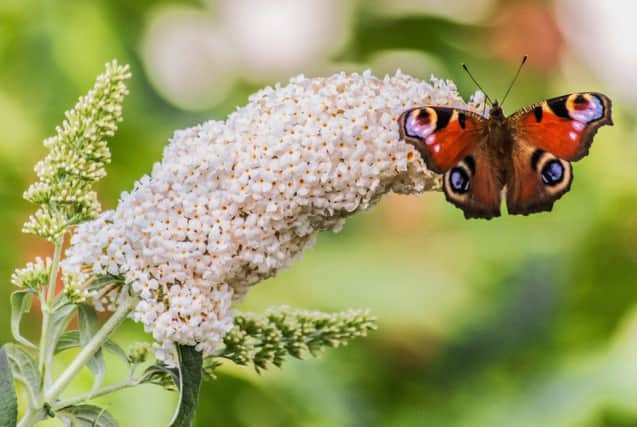Peacock butterfly enjoys summer heatwave


After several lean years, the Peacock was the second most abundant species seen in Scotland during the three-week Count with almost 10,000 recorded, the highest number in the history of the project.
It is thought the butterfly, which continues to expand its range across Scotland, benefited from the warm dry conditions which helped it successfully breed in the late spring and early summer, giving rise to a bumper summer generation.
Advertisement
Hide AdAdvertisement
Hide AdThe various common white species dominated this year’s Big Butterfly Count, claiming the top four spots alongside the Peacock.
The Small White was the most abundant species of Big Butterfly Count 2018 in Scotland with numbers up 152 per cent compared to the same period last year. The Large White took third spot up 242 per cent and the Green-veined took fourth place up 34 per cent on 2017.
The majority of species included in the count enjoyed a good summer with the Red Admiral, migrant Silver Y moth and Small Copper all being recorded in good numbers.
But grass-feeding species such as the Meadow Brown and Ringlet saw their numbers tumble 50 per cent and 77 per cent respectively, possibly because they emerged early during the heatwave and populations peaked before the count began.
Overall, members of the public taking part in the “citizen-science” project spotted more of the 17 target species than in recent years. On average, ten individual butterflies and moths were seen per 15-minute Count this summer, compared to just six in 2017, eight in 2016 and seven in 2015.
A record 100,000 participants took part in the Count, the world’s largest butterfly survey, spotting almost one million butterflies in the UK during the three-week, high-summer recording period. More than 5,400 Counts were completed in Scotland, double the number last summer.
Across the rest of the UK, the Small Tortoiseshell saw its ongoing slump continue with the butterfly recording its worst Count year on record.
The Small Tortoiseshell fared better in Scotland and experienced a rise of 21 per cent compared to the same period last year.
Advertisement
Hide AdAdvertisement
Hide AdButterfly Conservation’s research and recording expert Richard Fox said: “The bumper numbers of stunning Peacock butterflies and widespread whites have been a joy to behold this summer both on wildflowers in the countryside and in gardens across Scotland. This year’s Count has been a phenomenal success with more than 100,000 people enjoying beautiful butterflies, contributing towards conservation and reaping the mental and physical benefits of being outdoors in nature.
“Participants’ records are really important as they help us find out how the UK’s common species are faring and how to best protect them in the future.”